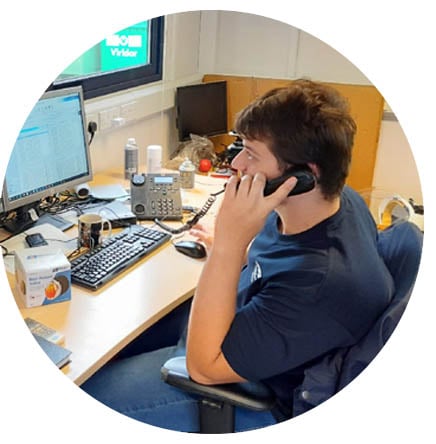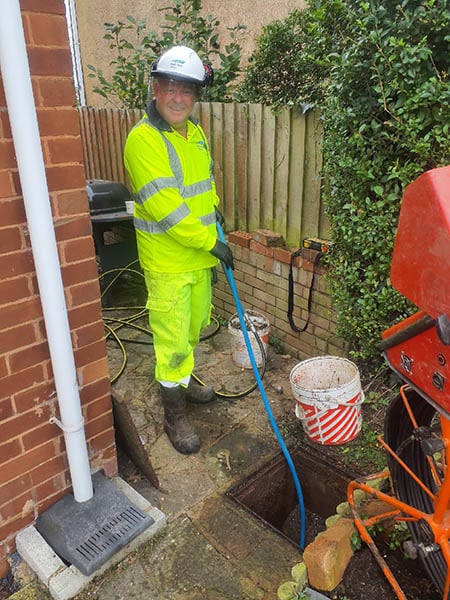Unblocking: The Truth
15th October 2021
A glimpse at what happens behind the scenes once a blockage has been reported.
The sewerage system is an extremely important part of our lives whether we think about it or not. Usually, the complex maze of pipework flows no problem. But sometimes, the unimaginable happens. Suddenly, you step outside and the manhole you normally walk over without noticing is now expelling an unforgettable smell and oozing thick, brown…you get the picture.
You stumble back inside and grab the phone.
 |
Amanda, a member of our Operations Department, answers your call. You describe the horror you’ve found outside, and Amanda makes notes – what the problem is, when it occurred and where – to pass onto our engineers. She then lets you know our engineers will be there soon – no longer than 4 hours. We’re on the case; you breathe a sigh of relief, say goodbye, and go and put your feet up. Amanda, however, is not finished. She now looks to see if anyone else is affected, raises a work order accordingly, and sends it to our Wastewater Dispatch Team. |
 |
Dispatchers, like our Kieran, work in specific areas and their job is to allocate work to the most appropriate engineers. Kieran must consider the type of work needed, how many people are affected and its location. If that wasn’t enough, all our engineers, like Shaun, are incredibly busy. They cover a wide radius of largely rural areas and, in a matter of hours, can go from battling hedgerows in search of pipes, to navigating the otherworldly underbelly of a town. We tackle up to 1 blockage per hour everyday – that’s a lot of engineers who need to be in the right place at the right time. |
|
When he arrives onsite, Shaun never knows what, exactly, he’s going to discover once he lifts the man-hole cover. Something he can be certain of is that it’ll be unpleasant. Is it going to be a tangled knot of wipes with added horrors like used tampons, cotton buds and even nappies? Or one of our more unusual culprits like odd socks and tricycles? Whatever it is, our engineers have to grit their teeth and get on with unblocking it. Thank goodness for their strong stomachs, eh? After he clears the blockage, Shaun uses a clever bit of kit to gather CCTV footage of the sewer to make sure the block hasn’t caused any other damage. This footage is reviewed by one of our technicians back in the office, like Lucy. Once they’re confident that the drains are operating normally again, and Shaun has cleared away all signs of brown goo, he hands you a card which details what he’s done. It’s important that you keep this card for your records. We’ll always give you a call a couple of days later, to check whether you’ve had any further problems. |
|
From first contact to final solution, unblocking your drain is a five-man job, and as important as it is, it’s completely avoidable. So, how can you help stop the block?
There is no engineering expertise required, no fancy formula and no excuses.
Blocked drains are caused when the sewers are used to dispose of things other than pee, poo and paper. When fats, oils and grease (FOG) are poured down the drain, it cools and solidifies around other objects in the pipes. Like a grotesque snowball, illegal wipes, plasters, period products and more stick to the FOG and the mess eventually grows big enough to block the pipes. Lovely.
It’s important to remember that if you flush an un-flushable, it might not be you who suffers the consequences. It might be someone in your street, or a few streets over, or the next village along. This can also have devastating effects on the environment and local wildlife.
Just because you don’t see the effect of your actions doesn’t mean it doesn’t happen.
Please, play your part, and help us make blockages a thing of the past.


